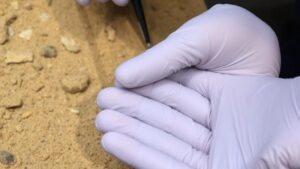Techniques for Cleaning and Restoring Metal Artifacts From Saltwater Sites
Techniques for Cleaning and Restoring Metal Artifacts From Saltwater Sites
The preservation of metal artifacts recovered from saltwater environments presents unique challenges due to the corrosive effects of saline conditions. Meticulously employing appropriate cleaning and restoration techniques is essential for ensuring these artifacts maintain their historical and aesthetic integrity. This article explores various methods that conservators and archaeologists utilize to clean and restore these valuable artifacts effectively.
The Importance of Proper Cleaning Techniques
Before delving into specific techniques, understanding the importance of proper cleaning is crucial. Saltwater environments accelerate corrosion due to the presence of chloride ions, which can cause pitting, flaking, and degradation of metal surfaces. Unchecked, these conditions can lead to irreversible damage. So, employing systematic cleaning techniques can mitigate deterioration and preserve historical context.
Common Corrosive Effects on Metal Artifacts
Metal artifacts retrieved from saltwater sites commonly exhibit various types of corrosion including:
- Uniform Corrosion: Affects the entire surface evenly, often leading to a dull finish.
- Pitting Corrosion: Creates small pits that can compromise structural integrity.
- Galvanic Corrosion: Occurs when dissimilar metals come into contact, exacerbated by moisture.
- Crevice Corrosion: Typically occurs in shielded areas, causing localized damage.
Understanding these forms of corrosion will help in selecting suitable cleaning methods that address specific types of damage effectively.
Cleaning Techniques
Mechanical Cleaning
Mechanical cleaning involves physically removing corrosion and contaminants through tools or abrasives. While effective, it requires caution to avoid damaging the underlying metal. Common tools include:
- Soft brushes: Useful for initial cleaning to remove loose debris.
- Pneumatic tools: Engaging lightly with media such as glass beads can be effective for tough corrosion.
For example, the recovery of a 17th-century ships cannon from a shipwreck involved the use of brush cleaning followed by a gentle abrasive method to avoid altering the artifacts fine details.
Electrolytic Reduction
Electrolytic reduction is a sophisticated technique for cleaning metal artifacts, particularly suitable for electrochemically unstable items. This method involves submerging the artifact in a solution and passing an electric current through it to reverse the chemical reactions causing corrosion. process generally involves:
- Selecting an appropriate electrolyte solution, often consisting of sodium bicarbonate or sodium carbonate.
- Using an inert cathode, such as stainless steel, during the immersion process.
A relevant case study is the restoration of bronze artifacts recovered from a submerged archaeological site, where electrolytic cleaning effectively removed corrosion while preserving the original patina.
Chemical Cleaning
Chemical cleaning utilizes various agents to dissolve or neutralize corrosion products. This method is particularly beneficial for artifacts heavily encrusted with salt and corrosion. Chemicals commonly employed include:
- Acetic acid: Useful for removing rust but should be used cautiously to prevent pitting.
- Citric acid: Less aggressive yet effective against light corrosion and staining.
- Calcium carbonate solutions: Effective for treating archaeological metals, particularly those with high calcium content from the seawater.
In a notable example, a lead artifact retrieved from a saltwater site was treated with a diluted citric acid solution, resulting in substantial cleaning without the degradation associated with harsher chemicals.
Passivation and Storage
After cleaning, passivation is crucial for protecting metals from future corrosion. This process involves treating the metal surface to form a protective oxide layer. Techniques may include:
- Applying corrosion inhibitors: Specific compounds can be applied to create a barrier against moisture.
- Coatings: Clear lacquers or wax can provide a physical barrier and enhance the artifacts appearance.
Consider the case of an iron anchor recovered from a naval wreck, which was successfully passivated and subsequently displayed in a maritime museum, illustrating effective preservation techniques.
Real-World Applications and Case Studies
Useing these techniques has proven successful in many archaeological contexts. The ongoing restoration of artifacts from the Titanic wreck is a prime example. Here, conservators utilize a combination of mechanical and electrolytic cleaning to deal with the unique challenges posed by the harsh marine environment.
Another example includes the restoration of a Roman shipwreck found off the coast of Sicily, where conservators meticulously employed chemical cleaning methods, followed by passivation treatments, resulting in artifacts that are now part of a public exhibition.
Actionable Takeaways
To wrap up, effective techniques for cleaning and restoring metal artifacts from saltwater sites include a combination of mechanical cleaning, electrolytic reduction, chemical cleaning, and passivation. Each method should be chosen based on the specific needs and conditions of the artifact. The proactive implementation of these techniques not only ensures the preservation of artifacts but also enhances their historical significance.
For conservators and archaeologists, understanding these processes and having access to the right tools and methodologies is paramount in the quest to maintain the integrity of our shared maritime heritage. By applying these techniques, one can not only restore metal artifacts but also preserve the narratives they carry through time.



